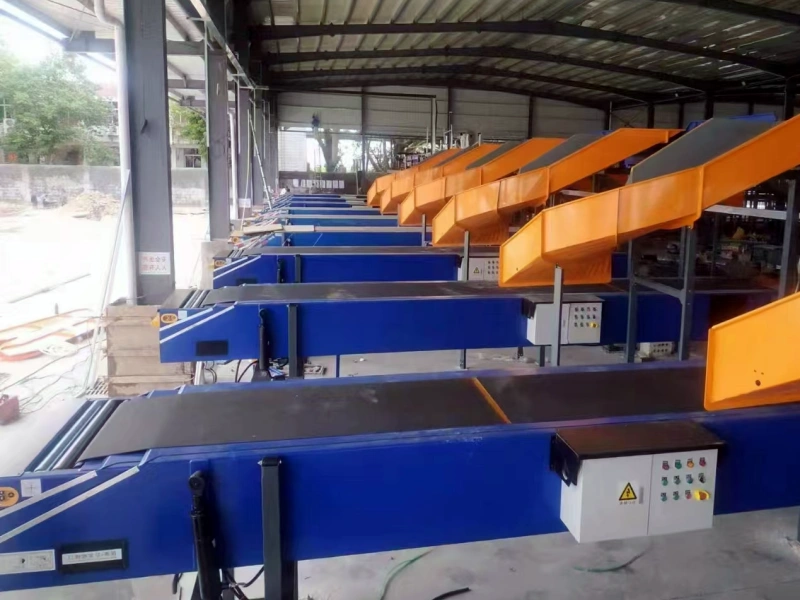
Technological Innovation of Energy-saving Conveyor System
As global energy consumption becomes an increasingly pressing issue, improving energy efficiency and reducing consumption have become critical challenges in the industrial sector. Conveyor systems, as vital tools for material transportation, are no exception. This article explores current technological innovations in conveyor systems, aiming to provide a more sustainable path for industrial development.
The Role of Conveyor Systems in Energy Efficiency and Reduction
1. Application of Intelligent Control Systems
Traditional conveyor systems rely on conventional start-and-stop operations, which fail to adjust to actual material flow demands, resulting in significant energy waste. The introduction of intelligent control systems has changed this dynamic. By collecting and analyzing material flow data, these systems can adjust the conveyor's speed and operation time in real time, ensuring efficient material transport while minimizing energy consumption.
2. High-Efficiency Drive Systems
Conveyors require substantial power for operation, and traditional mechanical drive methods often suffer from high energy losses. High-efficiency drive systems address this issue by reducing energy waste. For instance, using variable frequency drives (VFDs) to control transmission devices allows the conveyor speed to be adjusted based on material flow, avoiding prolonged high-speed operation and lowering energy use. High efficiency drive system are widely used in telescopic belt conveyors when loading unloading trucks.
3. Use of Green Materials
The construction materials of conveyors are critical for energy efficiency. The use of green materials can reduce environmental impact while enhancing conveyor performance. For example, lightweight, high-strength materials in conveyor components reduce the system's overall weight, lowering transmission load and energy consumption.
4. Development of Energy-Efficient Attachments
Conveyor systems rely on various attachments for material handling, and their design plays a crucial role in energy efficiency. New energy-saving attachment products, such as low-energy motion controllers and high-efficiency rollers, are gradually being adopted. These innovations not only reduce the system's energy consumption but also improve its stability and lifespan.
5. Data Analysis and Operational Management
Effective data analysis and operational management are key to energy efficiency in conveyors. By monitoring and analyzing operational data in real time, potential energy wastage can be identified and resolved promptly. Scientific and rational maintenance strategies also reduce failure rates, enhance system efficiency, and ultimately lower energy consumption.
Now you can you can apply energy-saving technology in mobile telescopic belt conveyors and flexible powered roller conveyors for your projects. This will help you reduce business running cost.
Challenges in Achieving Energy Efficiency in Conveyor Systems
Despite the progress made through technological innovation, several challenges and opportunities remain for improving energy efficiency in belt conveyor and roller conveyor systems:
1. High Technological Costs
The implementation of new energy-saving technologies often requires significant investment, which can be a burden for small and medium-sized enterprises. Governments and industry organizations should provide greater support through funding and policy incentives to encourage wider adoption of energy-efficient technologies. For example, the energy saving truck loading unloading conveyor is equipped with frequency converter and its price is higher than normal conveyors.
2. Standards and Regulations
Existing conveyor system standards often lack provisions for energy efficiency, providing little guidance for evaluating and adopting new technologies. Regulatory bodies should focus on developing standards and establishing a scientific evaluation framework to guide industries in adopting energy-efficient practices.
3. Technology Promotion and Adoption
The promotion and widespread adoption of innovative technologies also need to be strengthened. While larger enterprises have made progress in energy efficiency, small and medium-sized companies often lack the necessary technical resources. The industrial sector should conduct more training and technical exchange events, actively promoting innovative solutions to help more companies adopt the latest energy-saving technologies.
As energy challenges become more pronounced, research and innovation in energy-efficient conveyor technologies will continue to advance. Through intelligent control systems, high-efficiency drive technology, green materials, energy-efficient attachments, and data-driven operational management, the conveyor industry can achieve sustainable growth. Together, we can drive significant contributions to energy efficiency and reduction in the industrial sector, paving the way for a greener future.


Leave Me Your Requirement!